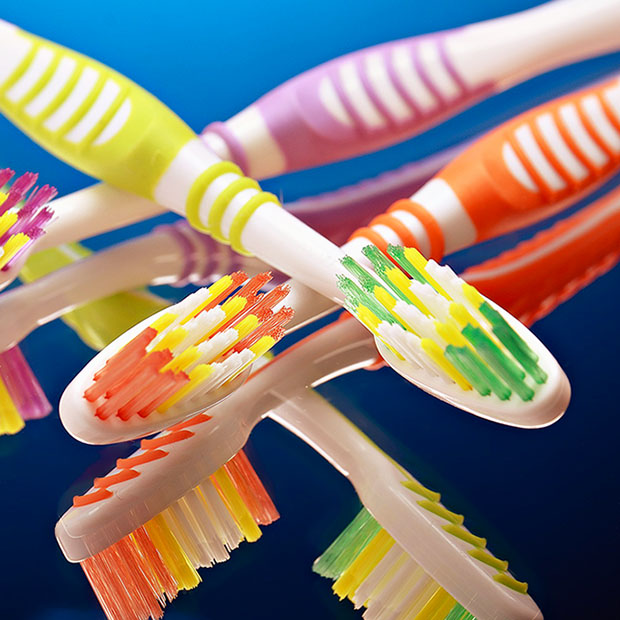Choosing the Best Toothbrush

Centuries ago, people didn’t have many options for how to keep their teeth clean.
Some cultures used chewing sticks and early toothbrushes had bristles made of horse hair. These days, we have a wide range of options for what tools to use for cleaning our teeth. How are you to find the one that’s best for you? We’d like to offer a few tips to narrow things down.
How Stiff Are Those Bristles?
When we’re doing chores around the house, it can often take some elbow grease to do a good job of cleaning various surfaces, but leave that idea behind when it comes to brushing your teeth. Brushing too hard can do serious damage to the gum tissue. It’s actually a major cause of gum recession! The firmness of the toothbrush bristles plays a role in that too. That’s why we recommend avoiding firm-bristled toothbrushes in favor of ones with soft bristles.
Stick With Manual or Spring for Electric?
Early electric toothbrushes didn’t do a much better job than manual ones at cleaning teeth, but modern electric toothbrushes have lived up to the original idea and often outshine their non-electric counterparts, cleaning out more plaque from hard-to-reach places. Good electric toothbrushes can eliminate up to 21% more plaque than a manual toothbrush and even reduce the risk of gingivitis by 11%! They also make it easier to last the two full minutes and brush gently.
Okay, but What Kind of Electric Toothbrush?
If an electric toothbrush sounds like something worth trying, there are still a lot to choose from. The two main varieties are oscillating and sonic brushes. Oscillating brushes spin rapidly, while sonic brushes vibrate side to side. They both work great! The most effective ones tend to be on the pricey side, but if you’d like our recommendation, just ask the next time you come see us!
Make Sure to Take Good Care Of It!
Once you have your ideal toothbrush, it’s also important to store it properly and replace it (or the head, if it’s electric) regularly. We would discourage using toothbrush cases except when you need them for traveling, because the best way to store a toothbrush is upright where it can dry out between uses. If it stays damp, it becomes a breeding ground for germs! Then make sure to replace it every few months, especially if the bristles become frayed or bent!
It’s Not Just About the Tool, but How you Use It
Having the best toothbrush for you is one part of the equation, and taking good care of it is another, but the most important thing is to maintain a good routine by brushing twice a day for two full minutes. Even the fanciest toothbrush can only prevent tooth decay effectively when it’s being put to good use. If you have any questions about which toothbrush to choose, just let us know!
